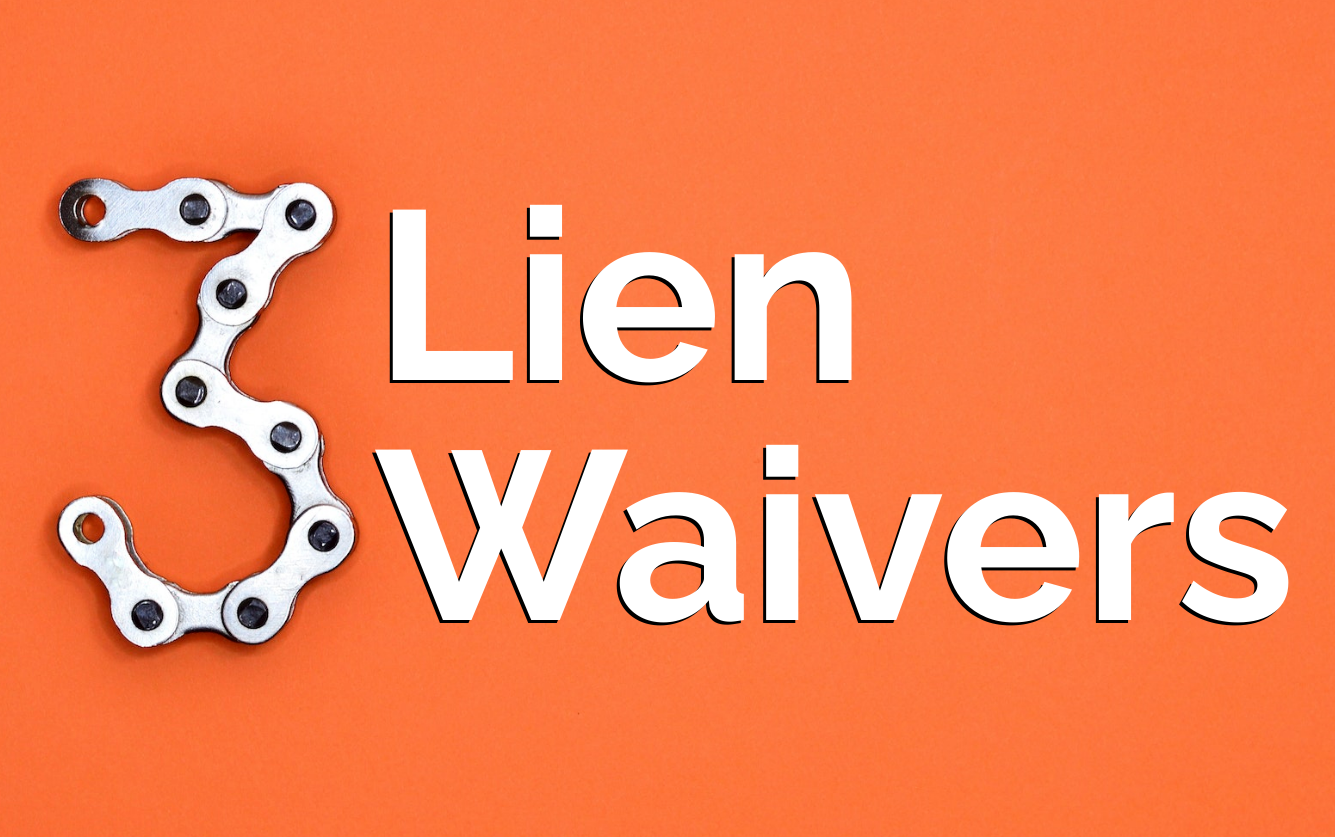Lien Waivers: What to Look for and What’s the Difference between a Waiver and Release?
Today’s 3-in-3 features Notice & Lien Specialist, Amy Hunger.
While on a project you might be asked to supply a lien waiver. Often, an owner relies on that waiver before paying a general contractor to make sure that the subcontractors and material suppliers are being paid.
Waivers today are more formal and more complex and it’s very important to know exactly what you’re signing before you sign it. Which leads us to our first question.
What should I be looking for when I’m being asked to sign a waiver?
Amy: You always want to know what type of waiver you’re signing and whether it’s a partial or final waiver. If it’s a partial waiver, confirm that the dollar amount is correct. If the waiver includes the paid through date, be sure the dollar amount stated is right for that time period.
If it’s a final waiver, confirm that the pay amount stated is for all open invoices for that project.
You should also check the waiver to see if it is conditioned upon receipt and clearance of the payment made. The preferred waiver is a conditional waiver because if payment is not received or does not clear, the waiver will not be enforceable.
On the other hand, an unconditional waiver does not require receipt or clearance of the payment. When an unconditional waiver is signed, your rights may be waived regardless of whether you received payment or whether payment clears the bank.
We’ve had quite a few projects where customers did not realize they were waiving their rights even if the check bounced.
Not every waiver contains the same type of wording so how do I know if it’s okay to sign it?
Amy: When signing waivers, you must be very careful. You want to read the entire waiver including the fine print.
If you’re unsure of what you’re signing, a legal opinion may be warranted to ensure that you’re not relinquishing your rights.
What is the difference between a lien waiver and a release of lien?
Amy: That’s a very good question. Many use these terms interchangeably, but typically a waiver acknowledges payment, where a release of lien releases a previously recorded document.
A release will usually have specific wording listing the date the original document was recorded and the book and page number of where it was recorded.
A waiver is never a substitute for a release. If you had previously filed a lien, when you receive payment you need to release that lien and not just provide a lien waiver.
3-in-3 Takeaway
Carefully review every lien waiver before signing. Ensure the waiver follows statute and be cautious when signing unconditional lien waivers.
Did You Know? NCS clients have free 24/7 access to statutorily written lien waivers; you can generate, print and track lien waivers for every project!
